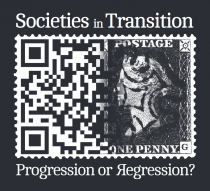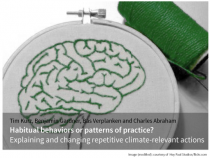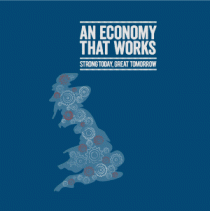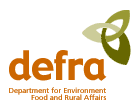- About
- Team
- Projects
- Children and the Environment
- ELiCiT (Exploring lifestyle changes in transition)
- Foundations for Sustainable Living
- HABITs
- Mapping Rebound Effects
- PASSAGE (Prosperity and Sustainability in the Green Economy)
- Policy Dialogue
- Price Responsiveness of Demand in Energy
- Resilience and Sustainable Lifestyles
- Sustainability Transitions in Food Systems
- Sustainable Living in Remote Rural Scotland
- Publications
- News
- Events
Sustainable consumption: willingness to pay
Project Team: Laura Blow (Institute for Fiscal Studies)

This project had three main aims:
1. to identify quantitatively from household purchase data the distribution of willingness-to-pay for a range of food characteristics (organic, freerange, fairtrade, country- of-origin) amongst the UK household population.
2. to study the empirical relationship between these preferences and demographics in the UK household population.
3. to study the relationship between these preferences and responses to attitudinal questions regarding various shopping habits, including preferences for buying local or environmentally friendly products.
Our data source was the Kantar Worldpanel, which is a record of grocery purchases made by a nationally representative panel of British households. The data records each product purchased on each trip by each household. Goods are distinguished at the barcode level. There is a large amount of data. For example in for 2012 there are 5,220,841 observations from 32,067 households for fruit and vegetable purchases alone.
The theory underlying this work is the linear characteristics model (Gorman (1956), Lancaster (1966)). The idea is that people’s preferences are defined over the characteristics contained in different goods. They choose goods to give the combinations of characteristics they most prefer, out of those combinations which are available and affordable. This gives rise to a simple, linear pricing condition: the price a consumer is prepared to pay for a market good is equal to a weighted sum of their willingness-to-pay for the characteristics it contains (the weights are the amounts of characteristics). This is also known as an hedonic price function. We used this condition to estimate willingness- to-pay, which are often referred to as the shadow prices of characteristics.
Very often people buy more characteristics than they do goods and so the number of observed market prices is less than the number of shadow prices we want to estimate. That is, there are more unknowns than equations and so the solution to the shadow prices is not unique. For these households we used maximum entropy estimation which estimates shadow prices consistent with the model using the most agnostic probability distribution over possible values.
Once we had estimated the shadow prices of characteristics we looked at how these vary in relation to demographic information in the data (for example income) and also answers to attitudinal questionnaires such as
“I am prepared to pay more for organic food” “organic foods are friendlier to the environment” “I buy British whenever I can”
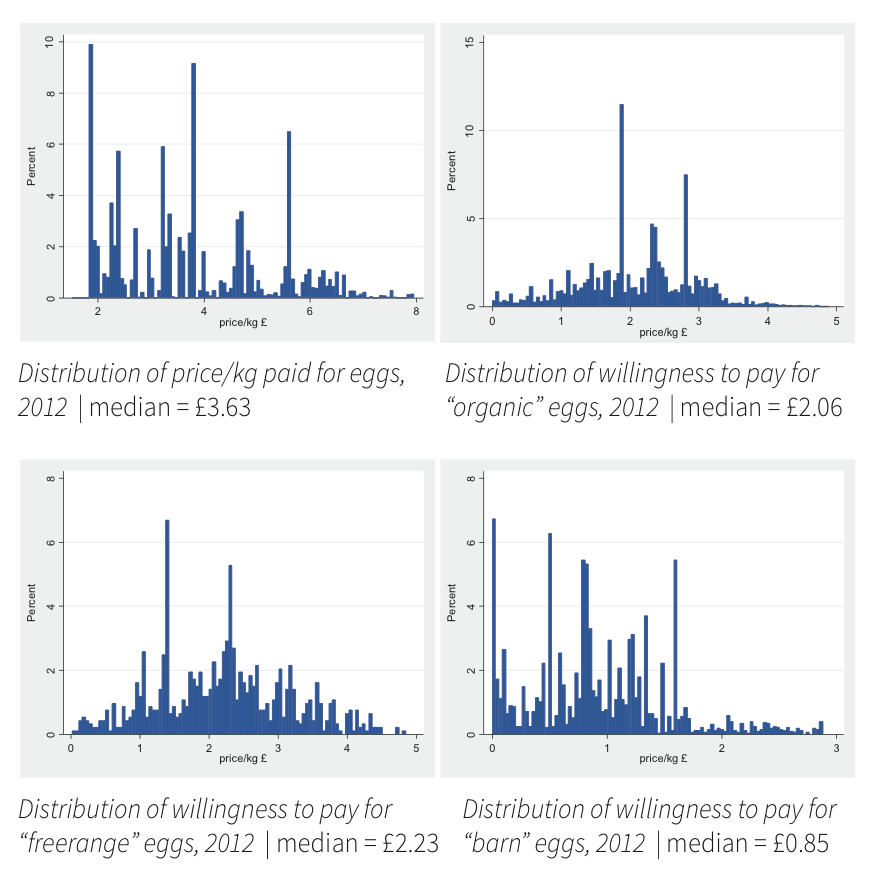
Contact
For more details please contact Laura Blow.


